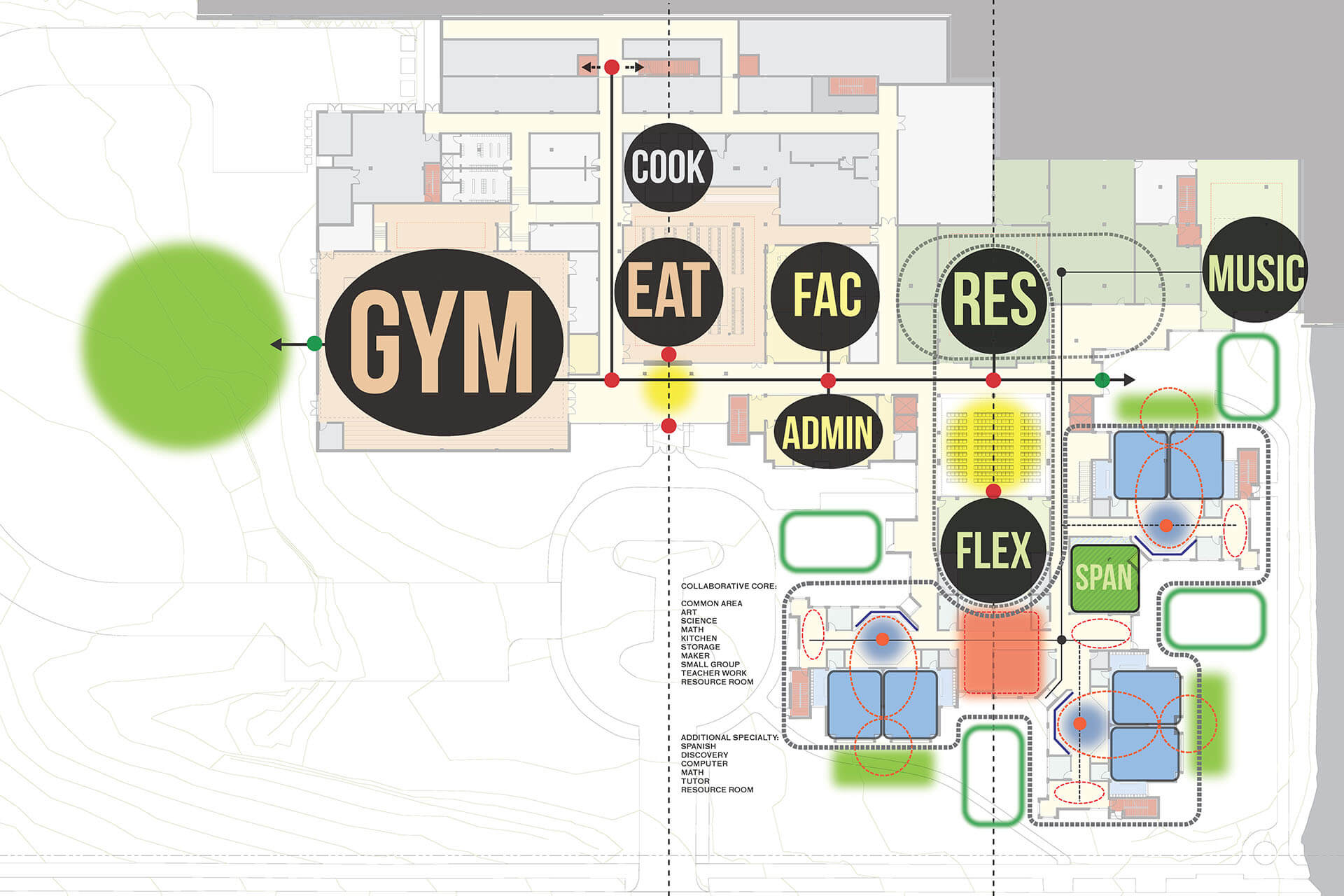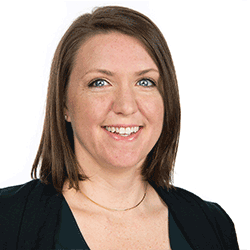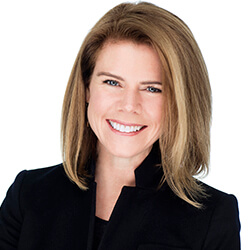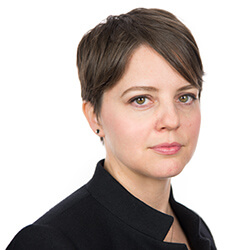We design academic spaces that inspire students and educators
We create dynamic spaces that engender collaborative learning and can transform with evolving pedagogies and advancements in learning technology. Our buildings support a range of teaching modalities and facilitate intellectual curiosity and flexibility.
We create dynamic spaces that engender collaborative learning and can transform with evolving pedagogies and advancements in learning technology. Our buildings support a range of teaching modalities and facilitate intellectual curiosity and flexibility.
Today’s educators must build on proven and established teaching and learning modalities, while testing pedagogical innovations, to make learning more efficient, productive, and impactful.
Each new K-12 environment we design builds on past experience to advance the definition of “state-of-the-art” in education. We bring together design concepts and new technologies from our work across numerous building typologies. By integrating these diverse trends into specific investigations, outreach, and basic research, our Education Center crafts schools that improve the quality of pedagogy and student outcomes.
Ennead’s K-12 Education Center Leadership
Ennead’s Centers of Excellence were established to codify the firm’s experience in specific typologies and to optimize and share expertise across the office. Each Center is led by senior Ennead staff who bring deep typological knowledge and are recognized leaders in their respective markets.
The Education Center maintains research and data on the K-12 educational landscape, including trends in best practices, programming, teaching methodologies, benchmarking facility sizes (nationally and internationally), program types (conventional and IB), and ever-changing developments in AV/IT infrastructure. The Center meets bi-weekly to review current K-12 projects, to discuss new environmental approaches to improve learning, and to sponsor lectures by guests from the broader educational community. This affords the staff associated with the Educational Center expanded perspectives on designing for K-12 institutions, which in turn gives them the confidence to question conventional wisdom and deliver truly innovative and transformative leaning environments.

Todd Van Varick
K-12 Education Leader
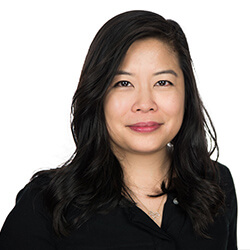
Minh Tran
K-12 Education Leader
Don Weinreich is a Management Partner in Ennead Architects. He graduated from Columbia University with a Bachelor of Arts and earned his Master of Architecture from the Columbia University Graduate School of Architecture, Planning and Preservation. In addition to his project-related responsibilities, Don is responsible for the office’s technology development, leading the implementation of new ways in which architectural computing can be incorporated into and advance the firm’s practice. He is a LEED Accredited Professional and a Fellow of the American Institute of Architects.
Education Experience
The David H. Koch Center for Cancer Care at Memorial Sloan Kettering Cancer Center, New York, NY,
Montefiore Medical Center, Children’s Hospital at Montefiore, Bronx, NY (unbuilt),
New York Academy of Medicine Expansion, New York, NY (unbuilt),
Brian Masuda is an Associate Principal at Ennead Architects with a diverse portfolio that includes award-winning projects in higher education, visual and performing arts, commercial, research laboratories, and healthcare.
Regardless of project type, he believes that architecture must reach beyond aesthetics by creating spaces that enhance human interaction, builds communities, and embodies wellness and sustainable thinking. As an extension of his project-based work, Brian is involved in the Cultural Center within the office, focused on designing and advancing technology for the next generation of the arts, and has taught integrated design at Cornell and Columbia Universities. Born and raised in Mililani, he is an alumni of the School of Architecture at the University of Hawai’i at Manoa and was the recipient of the AIA Henry Adams Medal.
Education Experience
University of Florida, Phillips Center Feasibility Study and Renovation
Connecticut College, Athey Center for Research and Performance at Palmer Auditorium
University of Michigan, A. Alfred Taubman Biomedical Science Research Building
Northwestern University, New University Commons, Renovation and Expansion
Allegheny College, Vukovich Center for Communication Arts
Kansas State University, College of Architecture Planning and Design
Arizona State University, Beus Center for Law and Society
Columbia University Law School, Library Addition
Frank Sinatra School of the Arts
The Ohio State University, Interdisciplinary Research Building Study
New York University, Gallatin School of Individualized Study
A Principal at Ennead Architects, Alex’s creative approach is driven by the belief that design and institutional culture can merge to create intellectual communities that prioritize learning over teaching and teamwork over individual achievement.
In addition to his project-related responsibilities, he directs the firm’s Center for Education, focusing on exploring and educating on innovations in Higher Education and K-12 projects. Alex speaks regularly at conferences around the country on his design work and on issues in higher education. Recent speaking engagements include 2019 SCUP International and Southern Region Conferences and the 2019 Tradeline University Facilities Conference. Alex has taught architecture at Rice University and Lehigh University.
Education Experience
Higher Education
The University of Texas at Austin, Cockrell School of Engineering, Gary L. Thomas Energy Engineering Building
The University of Texas at Austin, Cockrell School of Engineering, Engineering Education and Research Center (EERC)
The University of Texas at Austin, McCombs School of Business, Robert B. Rowling Hall
Purdue University, College of Science Master Plan
Purdue University, Flex Lab Facility
Purdue University, Chaney-Hale Hall of Science
Purdue University, Dudley and Lambertus Hall
Stanford University, Bass Biology Building
Stanford NYC, Master Plan
Johns Hopkins University, 555 Pennsylvania Avenue
Georgia Institute of Technology, Expansion of Tech Square
The Ohio State University Biomedical and Materials Engineering Complex
City University of New York, Medgar Evers College, Academic Building I
NYU Langone Health, Tisch Hospital
Education, K-12
Colegio San Ignacio
Concordia International School Shanghai, Pudong Campus Realignment Study
Seoul Foreign School, New High School
Frank Sinatra School of the Fine Arts
Seoul Foreign School Facilities Master Plan
Through research, drawing, and models, Tomas experiments with form, material, composition, and aesthetic language to create buildings that are visually compelling and deeply connected to place. He believes that architecture should not just be valued for its aesthetics, but also for how it can augment human performance, beyond terms of productivity and including terms of emotional well-being. An inherent risk taker, he considers buildings as cultural change agents, and his work centralizes on themes of social and environmental responsibility. Tomas is most interested in deep problem-solving to generate improvement in the culture that each building serves. His diverse range of expertise makes his critical problem-solving skills super-tuned to deliver real change, as well as create timeless architecture.
Healthcare Experience
Kuwait University, Health Sciences Campus
Northwell Health, Lenox Hill Hospital Redevelopment
Northwell Health 1345 3rd Ave Medical Office Building
Mount Sinai Beth Israel Concept Development
Modern Meadow
State University of New York Downstate, Health Science Center
Northwell Health, Inpatient Care Center (Phase II) (Zucker Pavilion)
To see Tomas Rossant’s full bio click here.
Molly has served as Management Partner for many of the firm’s complex projects for academic, cultural, and arts facilities, including both new construction and renovation projects. The essential relationship between project management and ultimate project success has always been central to Molly’s approach to architecture. Throughout the planning, budgeting, design, and construction process, her management style fosters a collaborative environment marked by open communication, trust, and shared vision.
Education Experience
Georgia Institute of Technology, Tech Square District Plan, Atlanta, GA,
Princeton University, Environmental Studies and The School of Engineering Applied Science, Princeton, NJ,
New York University, College of Arts and Sciences, New York, NY,
Brown University, School of Professional Studies, Providence, RI,
New York University, StudentLink and Global Services Center, New York, NY,
State University of New York Downstate, Health Science Center, Brooklyn, NY,
Barnard Academic Space Planning, New York, NY,
New York University, Tisch School of Arts Master Plan, New York, NY,
Stanford NYC, Master Plan, New York, NY,
New York University, Center for Genomics and Systems Biology, New York, NY,
Allegheny College, Vukovich Center for Communication Arts, Meadville, PA,
New York University, Gallatin School of Individualized Study, New York, NY,
New York University, Department of Journalism, New York, NY,
New York University, Departments of Economics and Politics, New York, NY,
To see Molly Mcgowan’s full bio click here.
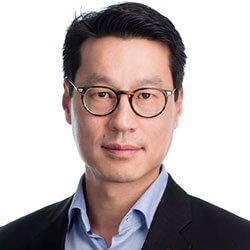
Thomas Wong AIA
Design Partner
Email | Linked In
In his 27-year tenure at Ennead, Thomas Wong has provided insightful design leadership on a broad range of building and program typologies, from museums to ambulatory care centers and inpatient hospitals. The projects he has designed span multiple geographic regions, from Asia and the Middle East to cities across the United States. The diversity of typologies and contexts in which he designs speak to the range of his design approach: Thomas treats each design problem as a unique set of opportunities and issues that lead to a distinct, specific, and authentic solution. His projects have received global recognition and multiple design awards.
Education Experience
University of Florida, Phillips Center for the Performing Arts Renovation & Addition, Gainesville, FL,
New York University, College of Arts and Sciences, New York, NY,
Rowan University, Edelman Fossil Park Museum, Glassboro, NJ,
Shanghai Academy of Fine Arts Competition, Shanghai, China,
University of Miami, Frost School of Music Knight Recital Hall Competition, Miami, FL,
New York University, StudentLink and Global Services Center, New York, NY,
Tianjin Academy of Fine Arts Competition, Tianjin, China,
Yale University Art Gallery Renovation and Expansion, New Haven, CT,
Cornell University, Computing and Information Science Building, Ithaca, NY (unbuilt),
University of Michigan, Biomedical Science Research Building, Ann Arbor, MI,
Stanford University, Iris and B. Gerald Cantor Center for Visual Arts, Stanford, CA,
New York University, King Juan Carlos I of Spain Center, New York, NY,
Pratt Institute, Stabile Hall Competition, Brooklyn, NY,
New York University, Main Building Renovation, New York, NY,
To see Thomas Wong’s full bio click here.
Emily Kirkland has played an integral role managing complex projects for nationally renowned academic institutions. Emily brings her incisive, analytical approach to specific areas of campus environmental design and academic facility making. She relies on her deep knowledge of metrics and innovation for institutional research projects to help guide her process. Her meticulous attention to detail, in all her work, ensures the execution of design in accordance with schedule and budget parameters. Emily is the co-leader of Ennead’s Laboratory Center and has worked on over 2 Million SF of multidisciplinary science, technology, and engineering projects over the last 12 years.
Education Experience
The University of Texas at Austin, Cockrell School of Engineering, Gary L. Thomas Energy Engineering Building
The University of Texas at Austin, Cockrell School of Engineering, Engineering Education and Research Center
The University of Texas at Austin, McCombs School of Business, Robert B. Rowling Hall
Purdue University, College of Science Master Plan
Purdue University, Flex Lab Facility
Purdue University, Chaney-Hale Hall of Science
Purdue University, Dudley and Lambertus Hall
Princeton University, Environmental Studies (ES) and The School of Engineering Applied Science, Princeton, NJ
Minh Tran is a Senior Associate and education programmer and planner at Ennead Architects. She works closely with the client to clearly define problems and create viable solutions by exploring the programming needs and the client’s aspirations. Her goals stem from her holistic approach to the life of a project. Minh combines her management skills with her interest in understanding how the design and planning can collectively solve issues and cater to a client’s goals.
Education Experience
Stanford ChEM-H and the Wu Tsai Neurosciences Institute (Chemistry, Engineering, Medicine, and Human Health) Stanford, CA
Sidwell Friends School, Comprehensive Master Plan, Washington, DC
The Westminster Schools Master Plan Refinement, Atlanta, GA
The University of Texas at Austin, McCombs School of Business, Future Growth Planning Study, Austin, TX
The University of Texas at Austin, Cockrell School of Engineering, Energy Engineering Building Master Plan Update and Formation Study, Austin, TX
Concordia International School Shanghai, Pudong Realignment Study, Shanghai, China
Todd Van Varick is an Associate Principal at Ennead Architects and has worked on a range of academic, institutional and civic projects during his tenure with Ennead, most recently the Yale University Art Gallery Comprehensive Renovation and Expansion and the Westminster Schools Renovation and Additions. Mr. Van Varick’s approach to problem-solving is rooted in the technical aspects of design and his vast understanding of technical design details and systems serves as a catalyst for directing and coordinating the in-house as well as the greater supporting design team. His goals are rooted in a fully collaborative effort that ensures the execution of the project design. Mr. Van Varick received a Bachelor of Arts degree from Lehigh University and Master of Architecture degree from Rice University.
Education Experience
Higher Ed
Allegheny College, Vukovich Center for Communication Arts, Meadville, PA
Brown University, School of Professional Studies, Providence, RI
Princeton University, Environmental Studies (ES) and The School of Engineering
Applied Science, Princeton, NJ
Kuwait University, Health Sciences Campus, Kuwait City, Kuwait
NYU/NYU Langone Health Science Block Planning Study (College of Nursing, College of Dentistry and NYU Bioengineering Institute), New York, NY
NYU School of Nursing and Dentistry, Planning Study, New York, NY
Stanford Law School, William H. Neukom Building, Stanford, CA
University of Michigan, A. Alfred Taubman Biomedical Science Research Building, Ann Arbor, MI
The University of North Carolina at Chapel Hill, Arts Common Planning Study, Chapel Hill, NC
Westchester Community College, Gateway Center for English as a Second Language, State University of New York, Valhalla, NY
Williams College, Paresky Student Center, Williamstown, MA
Yale School of Drama / Yale Repertory Theatre Planning Study, New Haven, CT
K-12
Seoul Foreign School, New High School, Seoul, South Korea
The Spence School, New Building Conversion Covid-19 Response, New York, NY
The Westminster Schools Stadium and Community Plaza, Atlanta, GA
The Westminster Schools, Barge Commons, Atlanta, GA
Design for K-12 Education
We see numerous new trends on the horizon that we can explain and deploy for our clients to customize educational environments that best suit their particular learning culture.
These include:
-
- Programming for student mental and physical wellbeing;
- Designing flexible spaces to accommodate broadly divergent programs;
- Delivering public spaces that encourage student and community interaction and supports diversity, equity, and inclusion;
- Creating didactic facilities that show students how the building functions sustainably to encourage environmental consciousness;
- Conceiving of spaces that support peer-to-peer learning and knowledge sharing;
- Developing programs and environments that are conducive to faculty-to-faculty collaboration;
- Integrating the arts into daily experience;
- Defining a secure and “smart” campus;
- Utilizing mechanical systems and space planning strategies to prepare for future pandemics.

Bringing the University to the K-12 Experience
The architects and designers who contribute to the Ennead Education Center do not specialize between K-12 architecture and collegiate architecture. We design better K-12 architecture (and better university architecture as well) by understanding the fluid relationship between these two pedagogical contexts and how they shape the developmental journey of a young person.
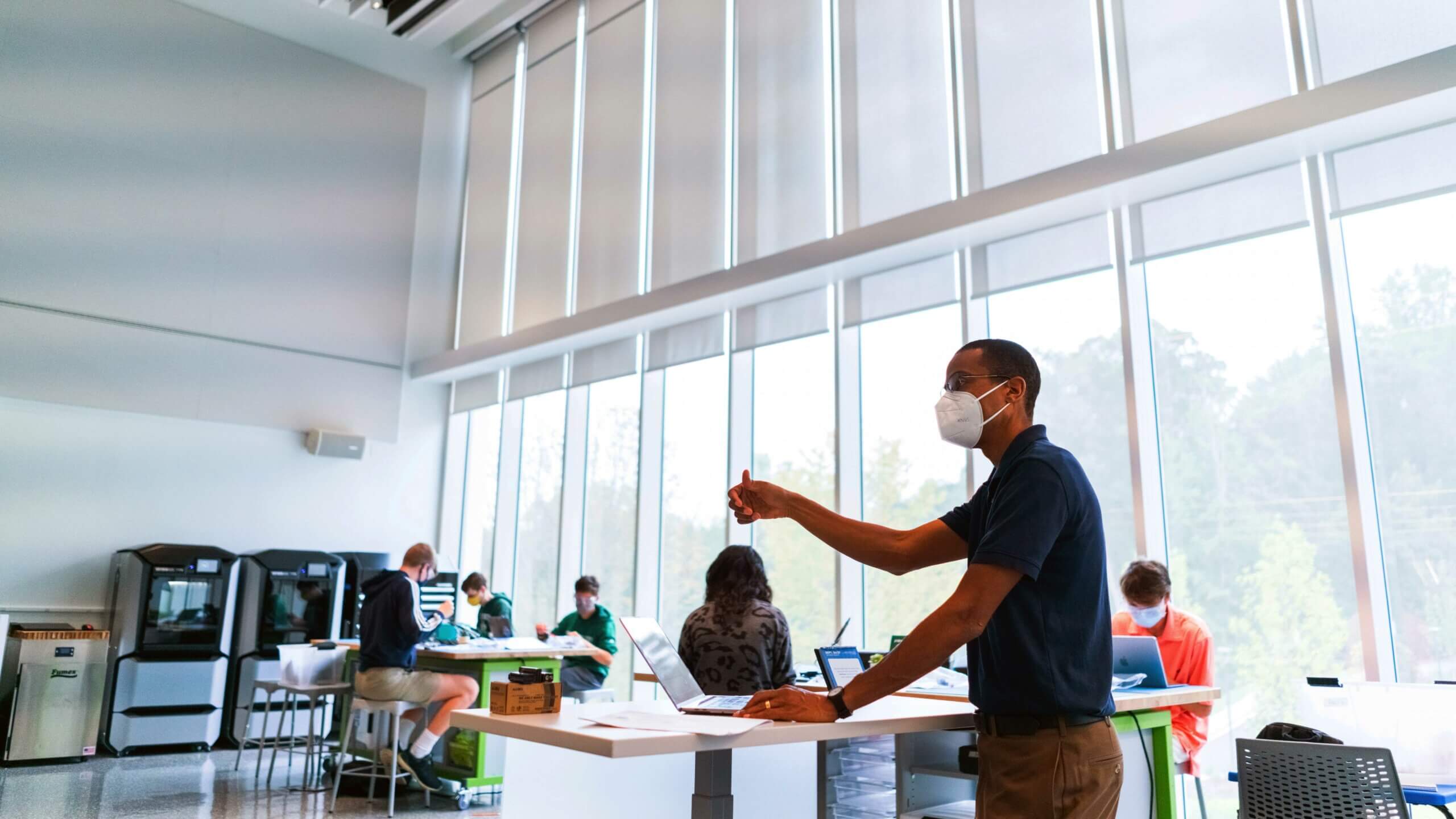
This is meaningful as we see K-12 schools increasingly nurturing their students in environments that perform like collegiate campuses. From our higher education projects we see universities focusing on student wellness, encouraging entrepreneurship, building “design thinking” into their curricula, integrating the arts into daily experience, creating spaces that foster “diversity, equity, and inclusion,” privileging more independent study, and encouraging teachers to practice collaboratively across all disciplines. Design that creates quiet spaces, ample daylight and access to fresh air positively impacts emotional and physical wellbeing and support learning for neurodiverse populations.
Informing our K-12 clients as to new developments in higher education gives them choices about how deeply to immerse students in a physical context that is like a collegiate experience. When these principles are deployed in K-12 planning and design, rich educational environments are formed and are instrumental in a young learner’s educational journey.
By maintaining a design culture that moves between K-12 and higher educational territories, we utilize the environmental and pedagogical trends in each arena to better respond to the unique institutional needs of each client.
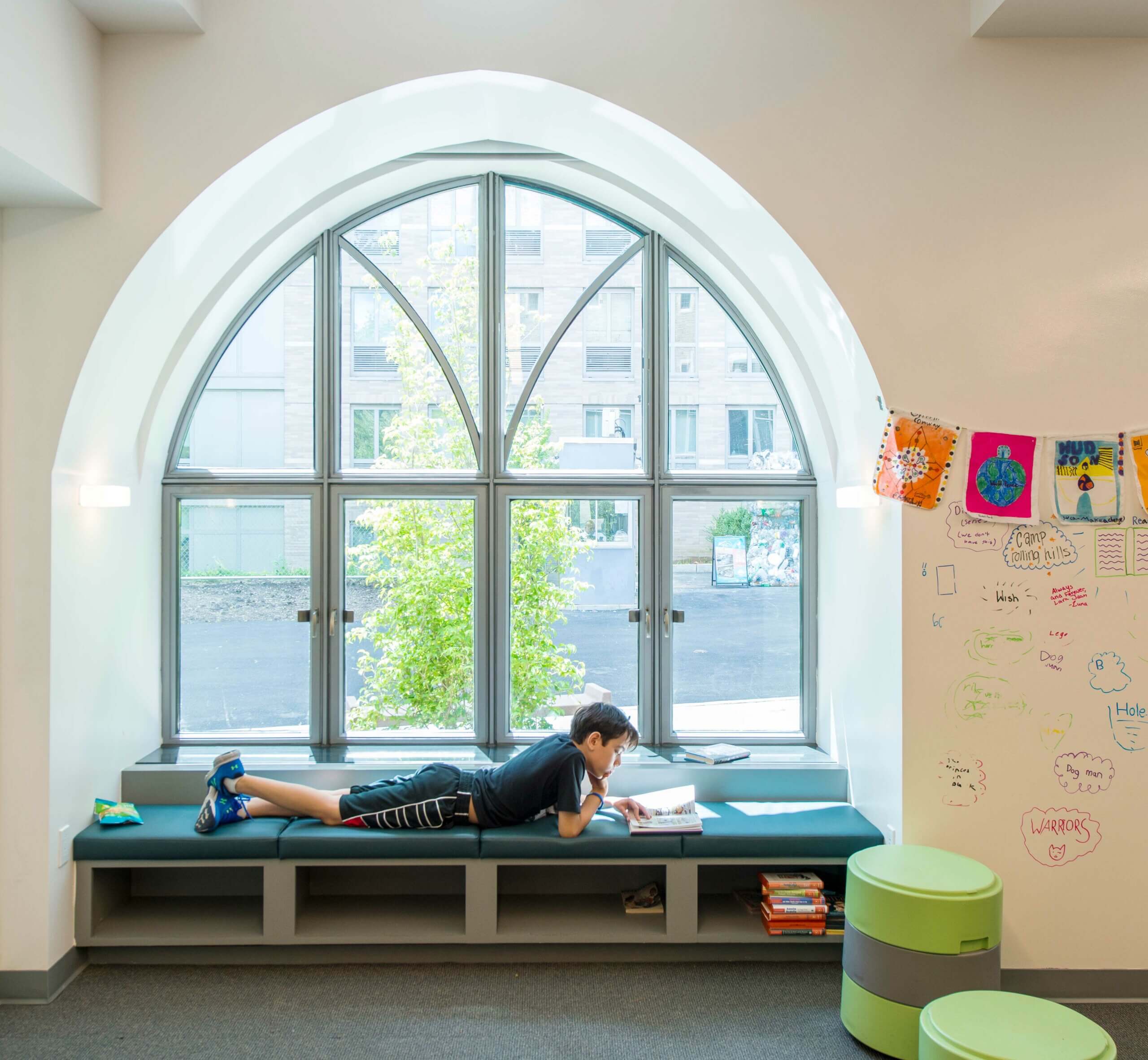
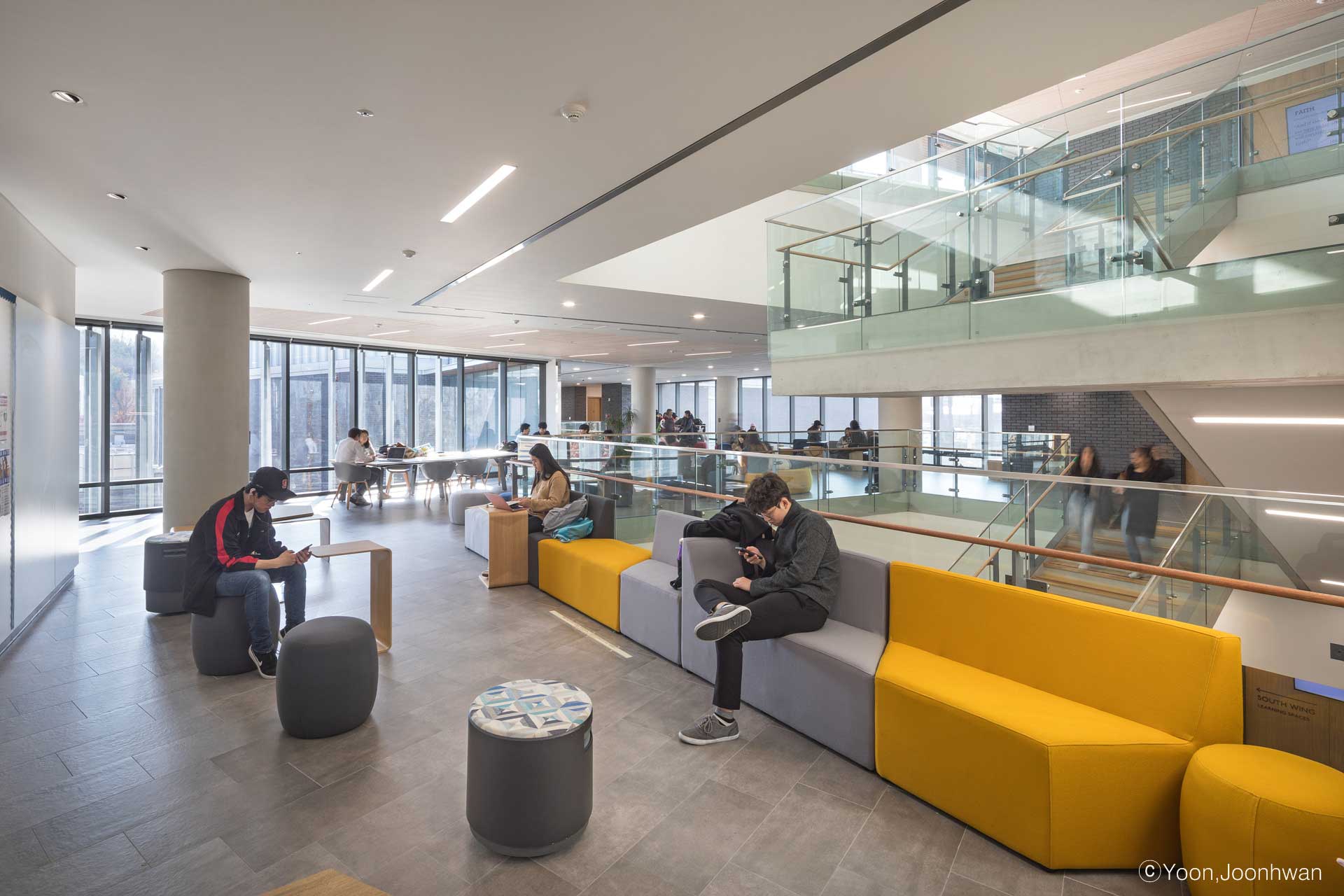
Teaching and Learning in the “Spaces in Between”
There is a growing consensus among educators, social scientists, and economists that today’s students will face a future that will require them to be capable of constant learning, retraining, and new skill acquisition. To prepare, this generation of students will need to be instilled with life-long intellectual curiosity and develop the mental agility to continually acquire knowledge through social engagements, peer-to-peer collaborations, and individually motivated learning.
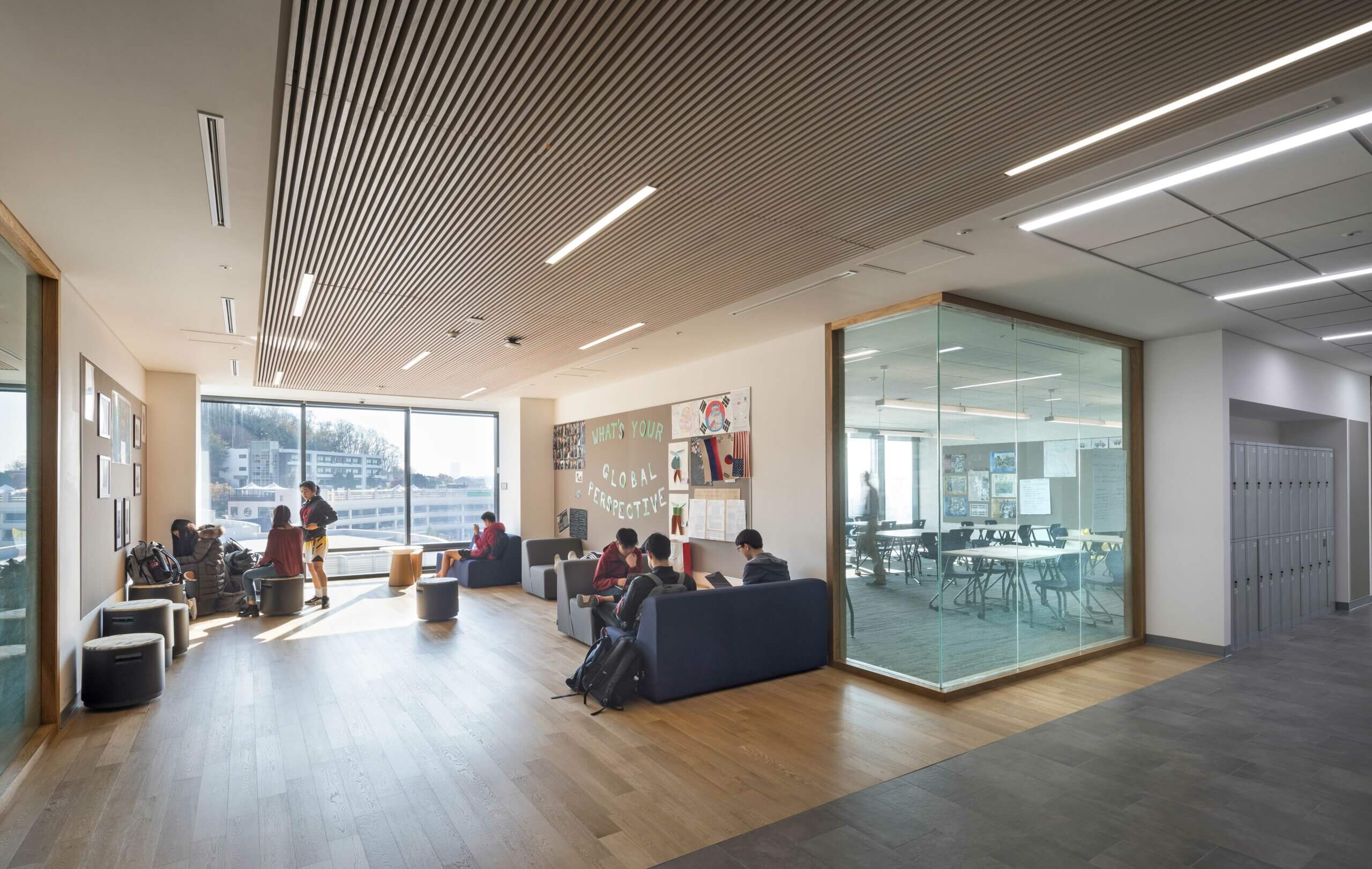
To support this modality, classroom learning should be augmented by informal knowledge sharing outside the classroom, balancing teacher-centric learning with student-centric learning. All scales of spaces should be designed to support a variety of interactions, from common classrooms to informal breakout areas and corridors. This allows for a continuum of learning, teaching, and mentoring to take place throughout the day, puts “learning on display” everywhere, and engenders in students a sensibility that learning is not a chore, but a communal and individual joy.
We see an opportunity in what we call the “spaces in between”—the circulation networks of school buildings—to deliver novel, diverse, and challenging environments that give both students and teachers more flexibility as to where, when, and how they teach and learn.
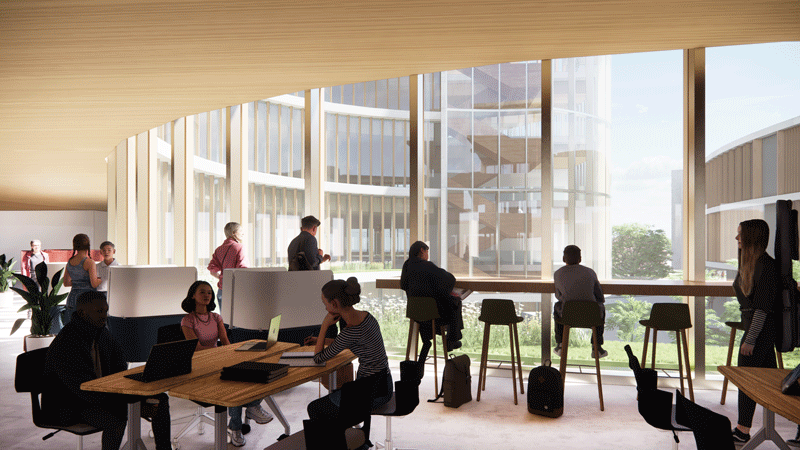
Making, Design Thinking, and Creating the “Idea Entrepreneur”

Educational institutions are increasingly focused on cultivating well-rounded students who are capable of traditional data collection and synthesis as well as innovative design thinking. Design thinking can be nurtured alongside more traditional education to deliver the intellectual pleasure of “thinking differently” and to teach students the “joy of failure.” Schools are promoting hands-on experiential learning to instill in students the skills to become “idea entrepreneurs.”
Our facilities support learners who deploy multiple modalities of learning and reasoning –students with “elastic minds.”
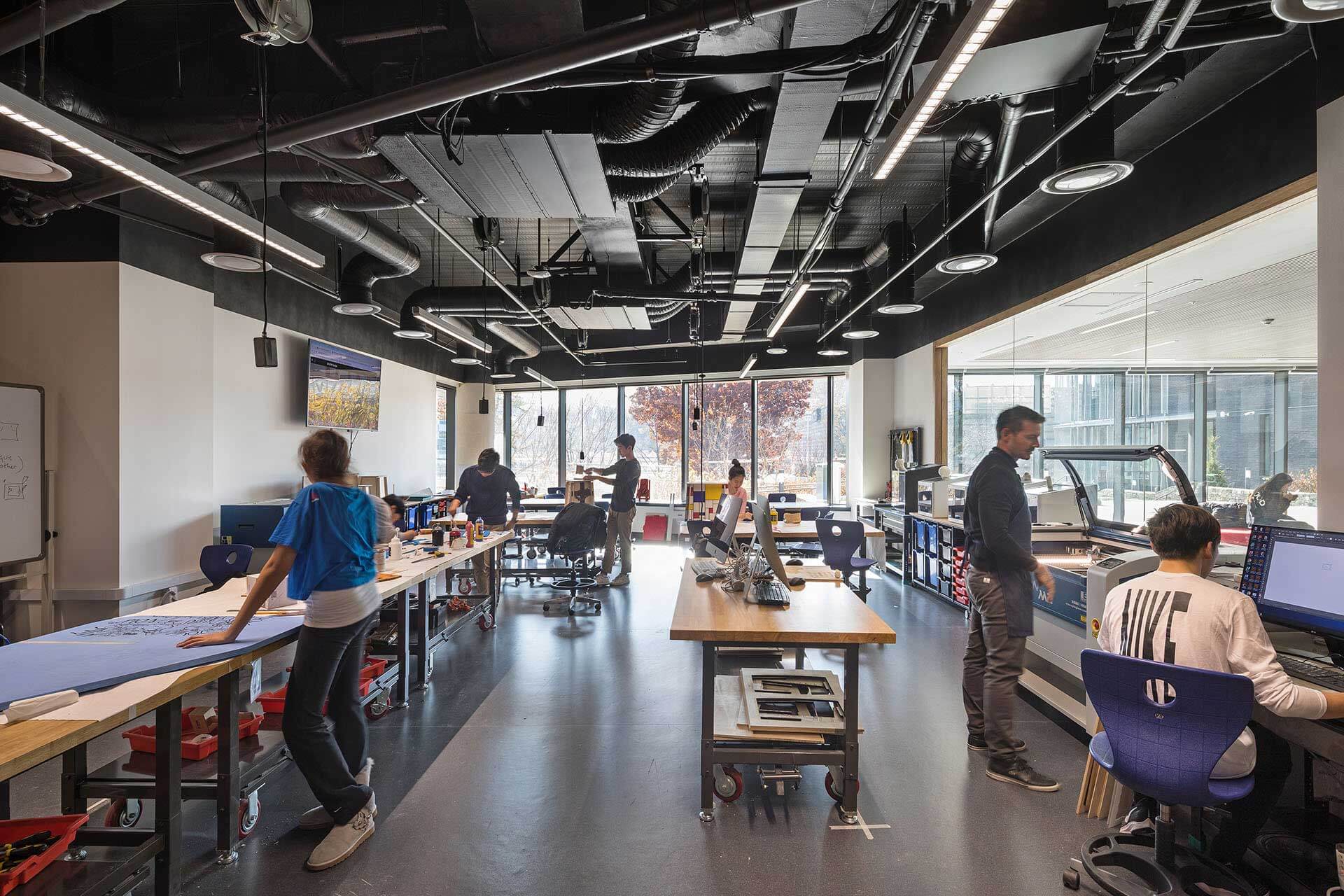
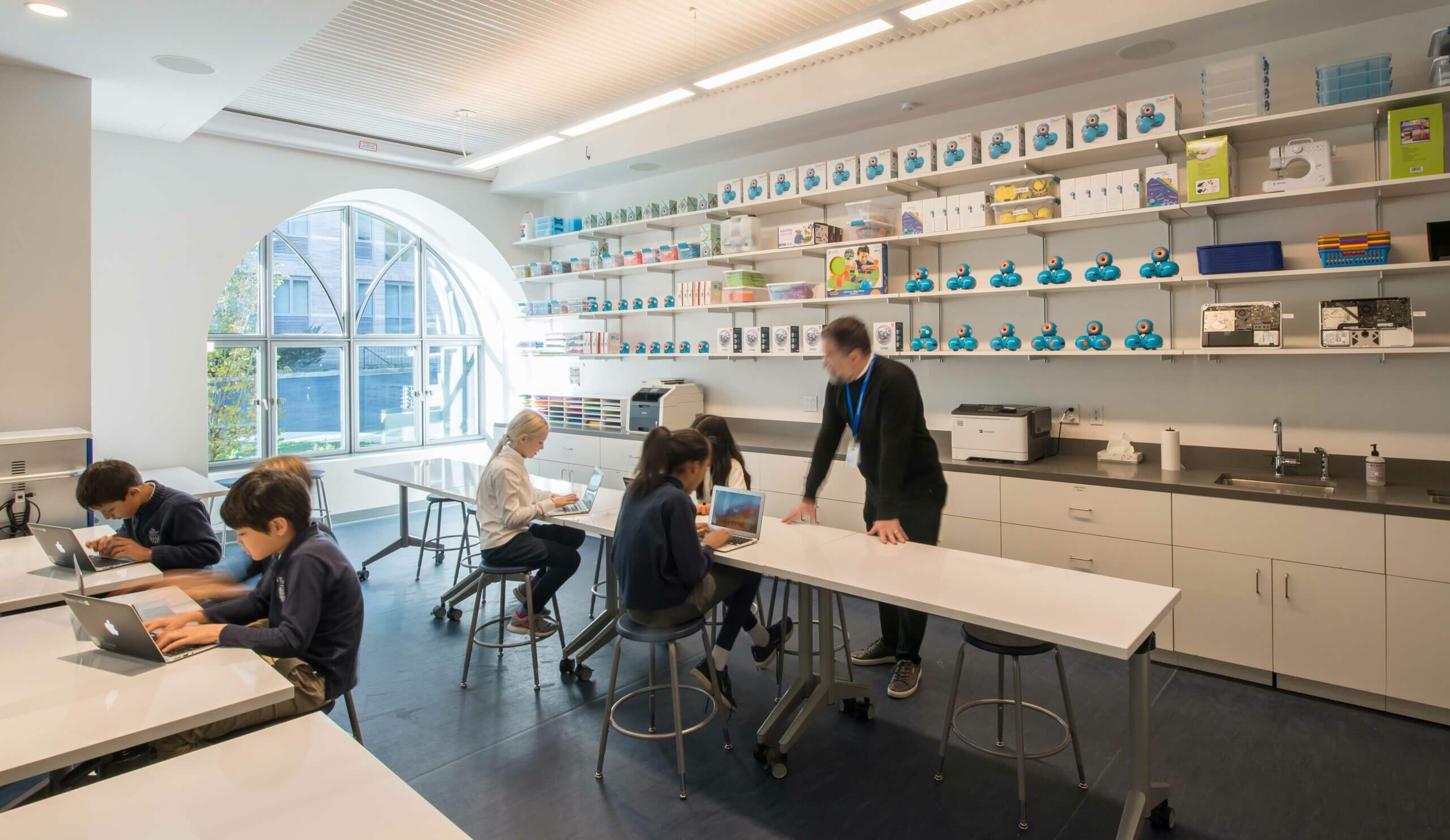
We believe when young learners are provided spaces to explore critical thinking in a non-traditional setting, like fablabs, maker shops and informal skunk-works spaces, they thrive. We can deliver these spaces as purpose-built new construction or carefully planned in new or existing academic buildings, carving them out of existing and often underutilized spaces.
Creating Classrooms for Myriad Teaching Modalities
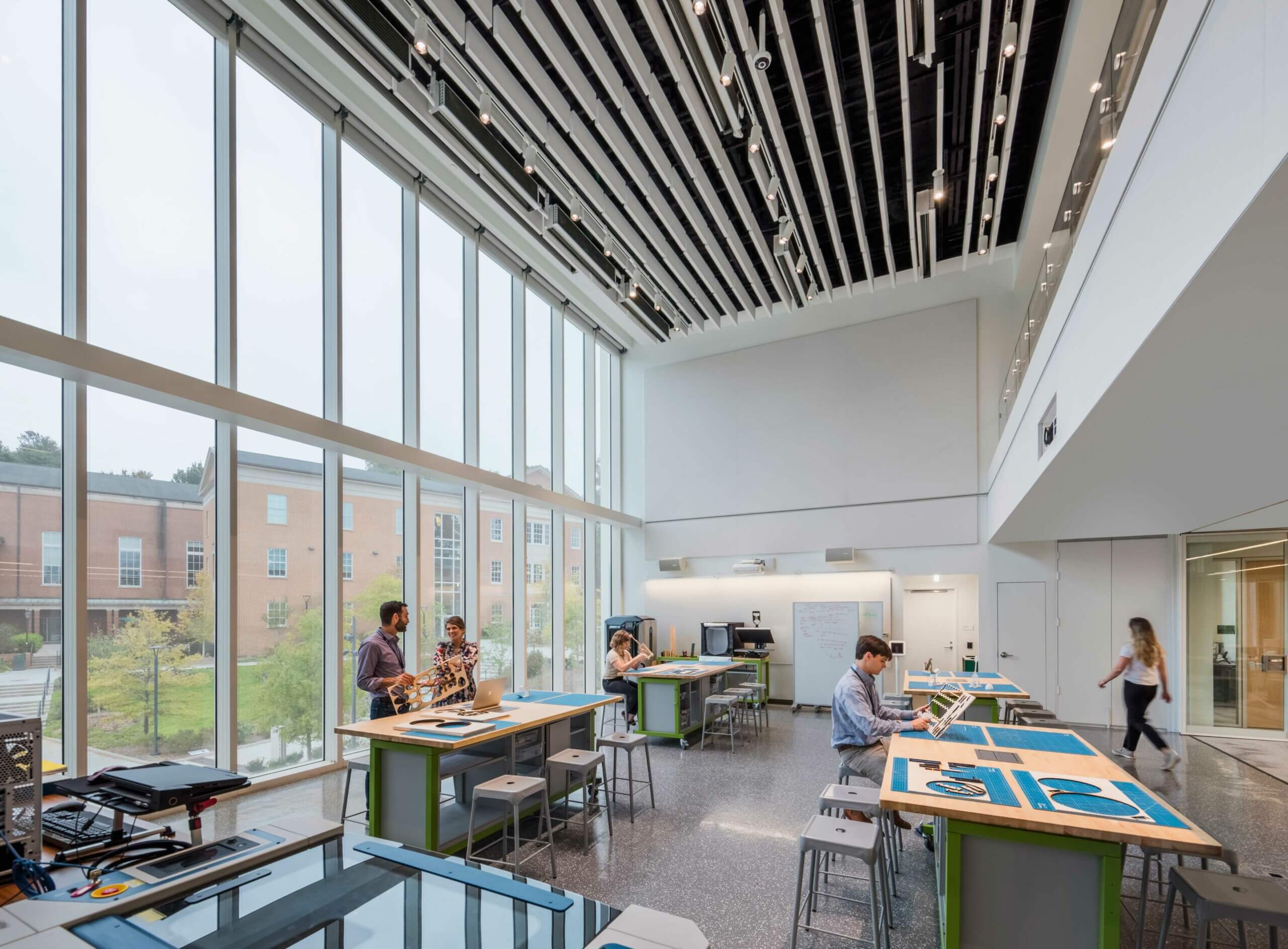
The common classroom remains the educational workhorse for direct knowledge sharing between teacher and student and for peer-to-peer discourse. As such, the classroom must still allow for the traditional mode of teaching with “teacher in front,” students facing forward, that is still valuable for independent student work, test taking, and lectures. However, classrooms can also be designed maximum flexibility, with the ability to quickly reconfigure teaching, learning, and educational experiences.
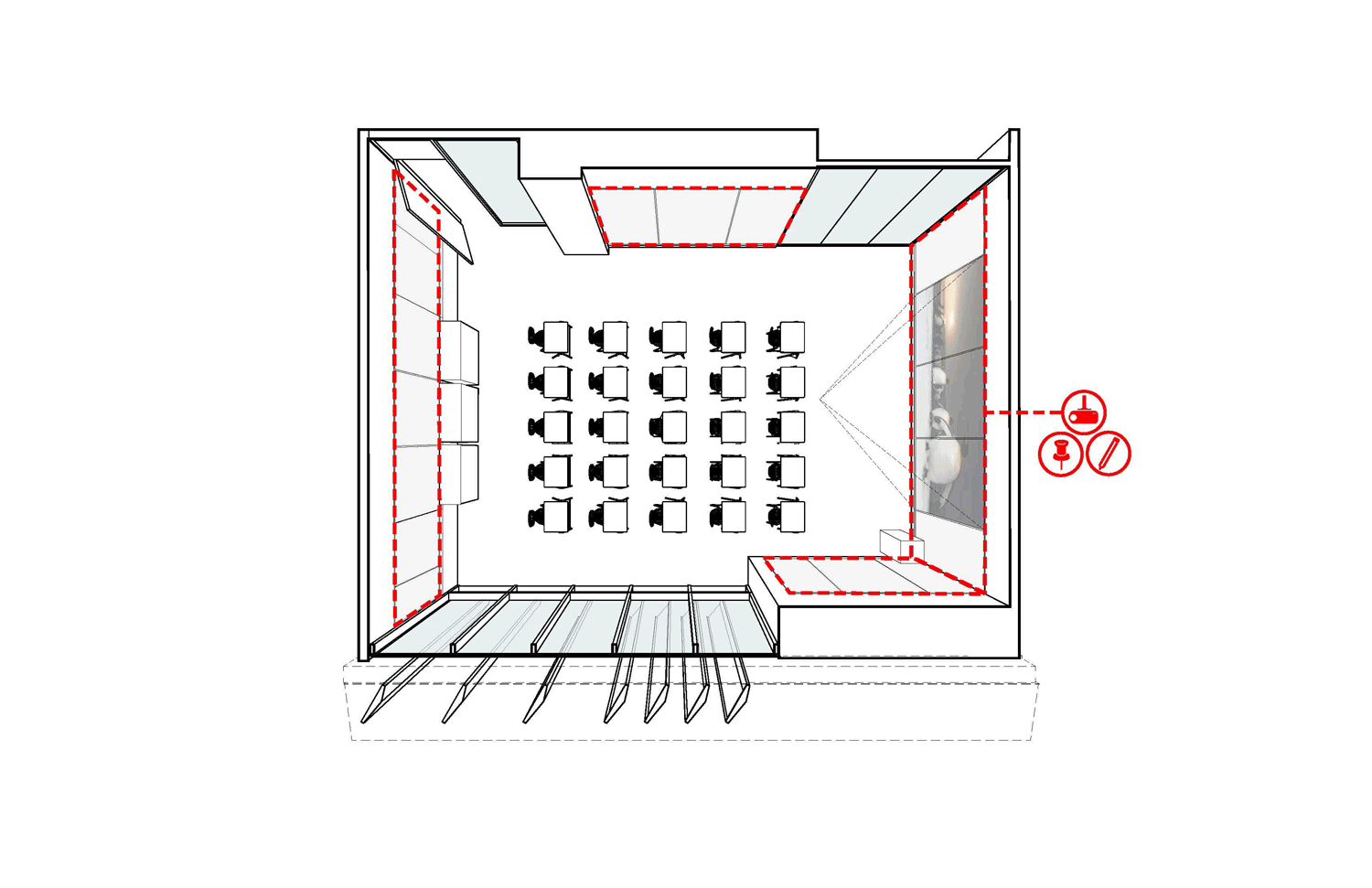
We believe flexible classrooms encourage intellectual risk taking, experimentation, and ultimately the understanding that the student and the teacher can shape their own destiny.
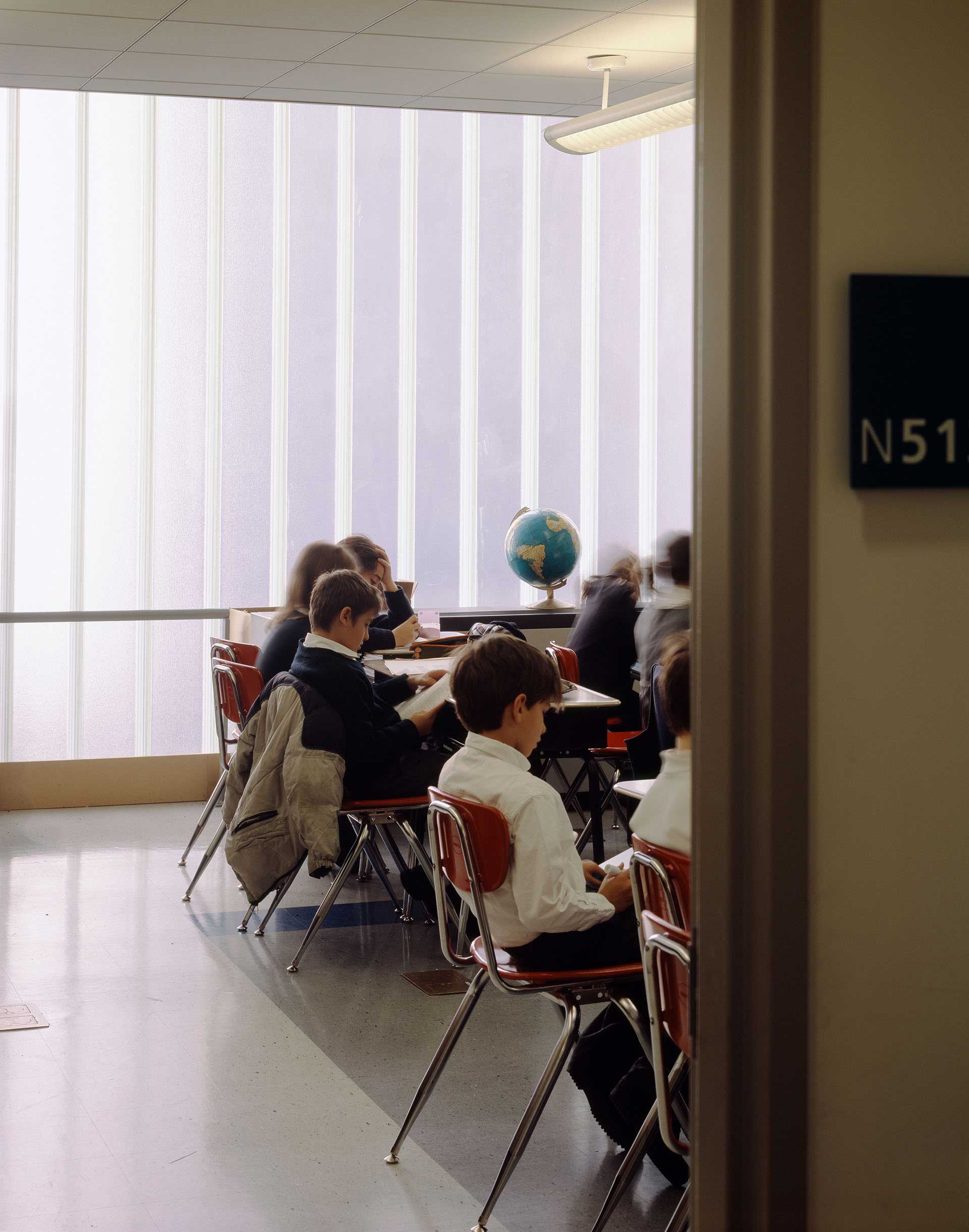
By utilizing cutting-edge furniture solutions, state-of-the-art AV/IT equipment, operable partitions, and highly tunable lighting systems, we can create classrooms that can be re-conceived on an hourly, daily, or weekly schedule. Today, a single classroom can support conventional teaching methods, but also flex to accommodate experiential learning, team teaching, student collaborative learning, demonstrations, flipped classrooms, seminars, and group discussions.
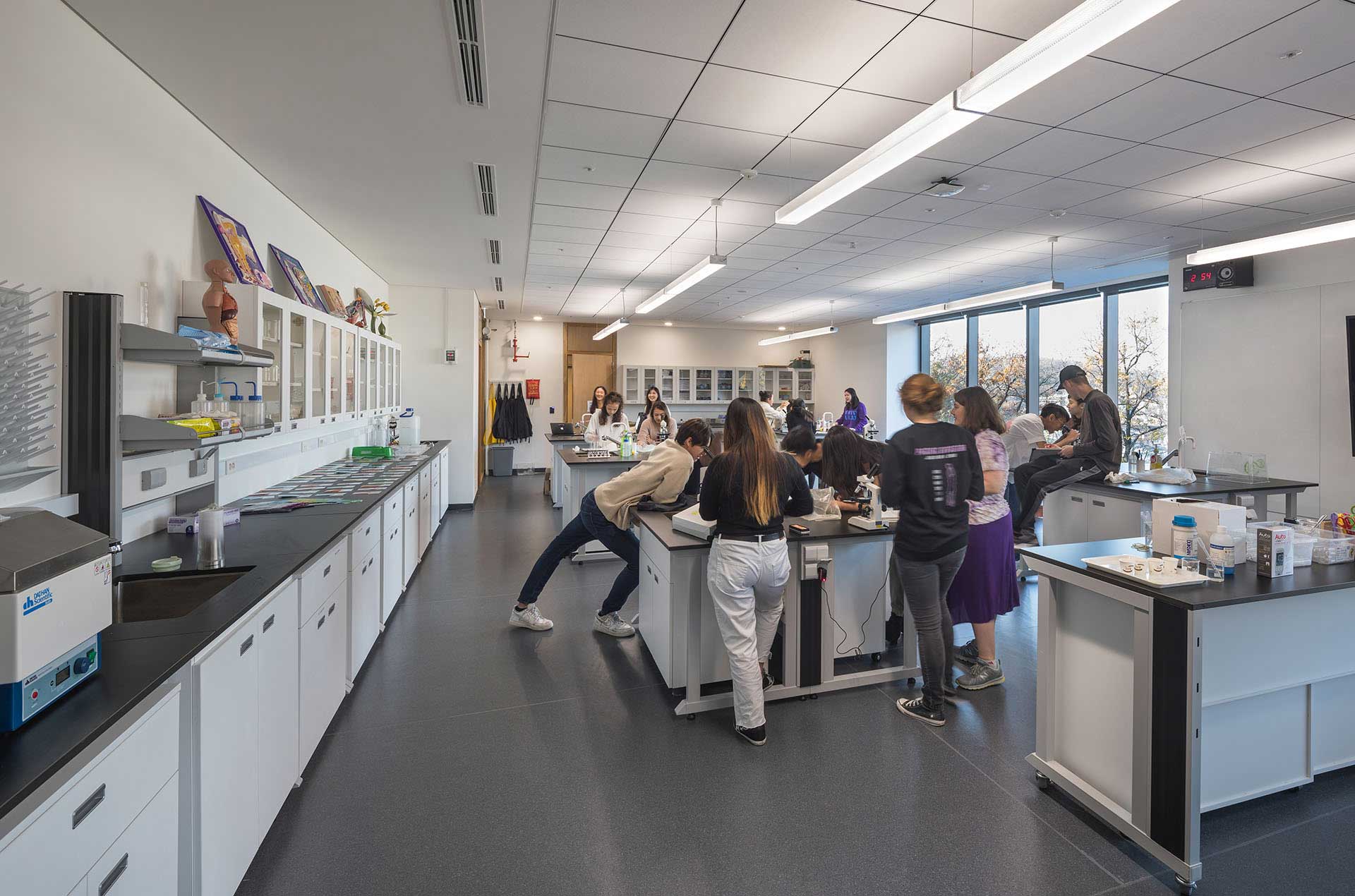
Designing Sustainable Facilities to Support Educational Missions

Sustainable design is an essential objective from the early planning stages of any planning study or building. Within K-12 facilities, creating didactic spaces that show students how the building functions sustainably encourages environmental consciousness and contributes to the pedagogical discourse.
From day one, our designers think holistically about the site and the process, including social and historical context, to identify values, make commitments, and develop methods that maintain accountability for these established values and guiding design principles. Throughout the design process, we benchmark sustainability metrics using our Design Performance Opportunities checklist–an internal quality assurance document for tracking metrics in key performance categories. Prioritizing sustainability approaches into the design process is a fundamental value in our practice, and we will continue to evolve as the environmental story unfolds before us.
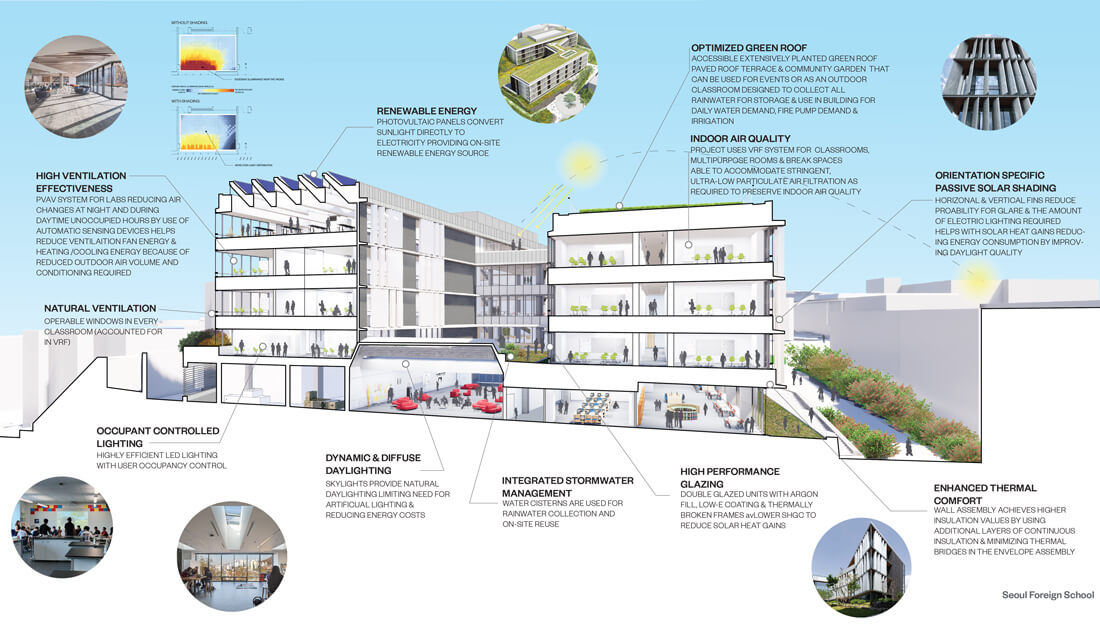
Public Schools
Our facilities for private institutions often rival those for higher education, with sophisticated learning environments that incorporate cutting edge technologies and design principles. Whether creating a new facility or modernizing an existing building, we design spaces that inspire educators and students and connect to the larger campus context.
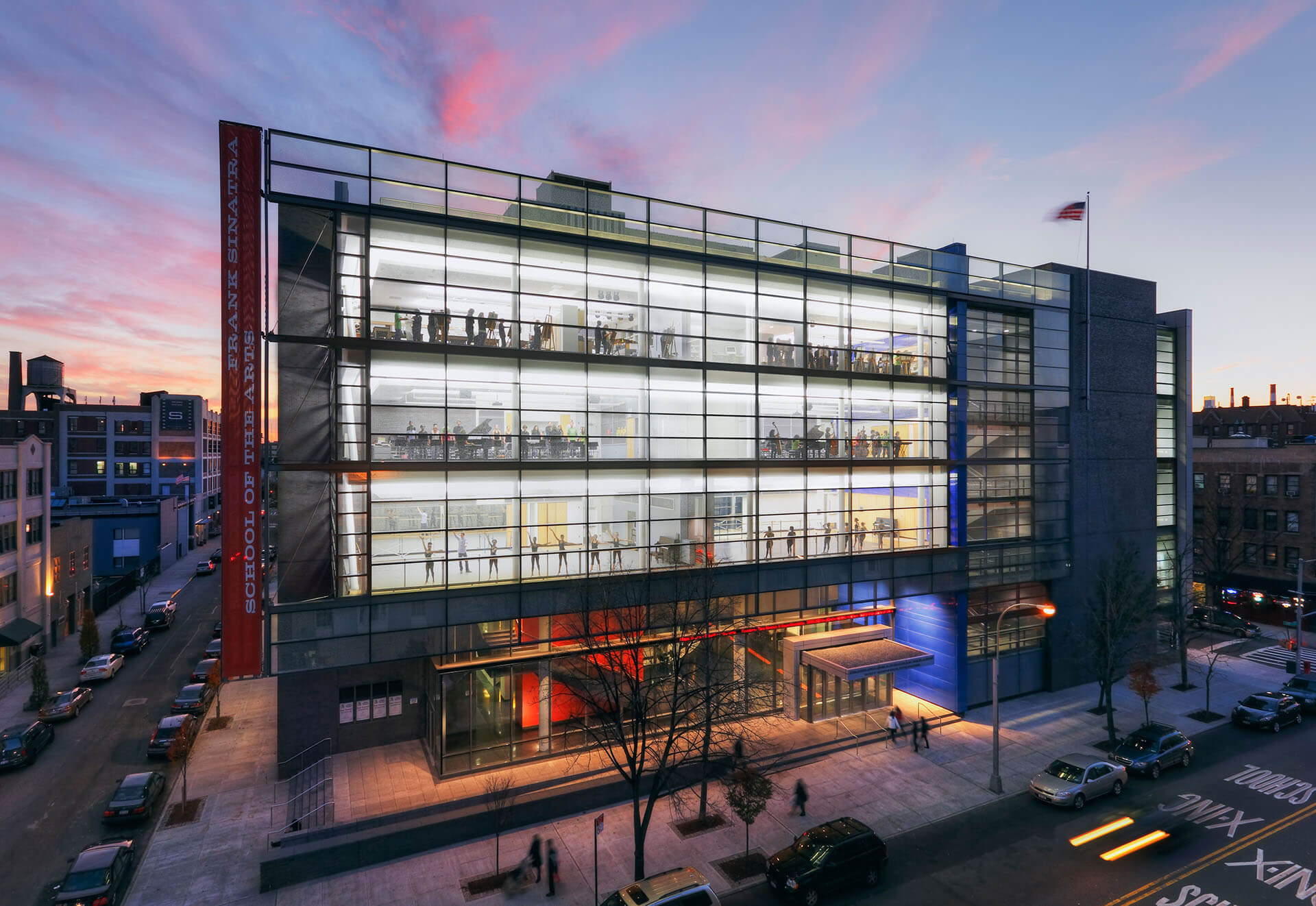
Selected Clients
East Harlem Tutorial Program, Scholars Academy High School
Frank Sinatra School of the Arts
Montclair Public Schools
NYC Public Schools, P.S. 22
NYC Public Schools, P.S. 165
NYC Public Schools, Intermediate School 172
NYC Public Schools, Intermediate/High School, District 43
NYC Public Schools, High School for Law Enforcement and Public Safety
Private Schools
Our work for public education often calls upon our expertise in specific building typologies – performing arts or laboratories, for example– to create spaces for specialized K-12 programs. These dynamic, purpose-built facilities fulfill unique programmatic requirements while projecting institutional identities, establishing schools as a vital component of their surrounding communities.
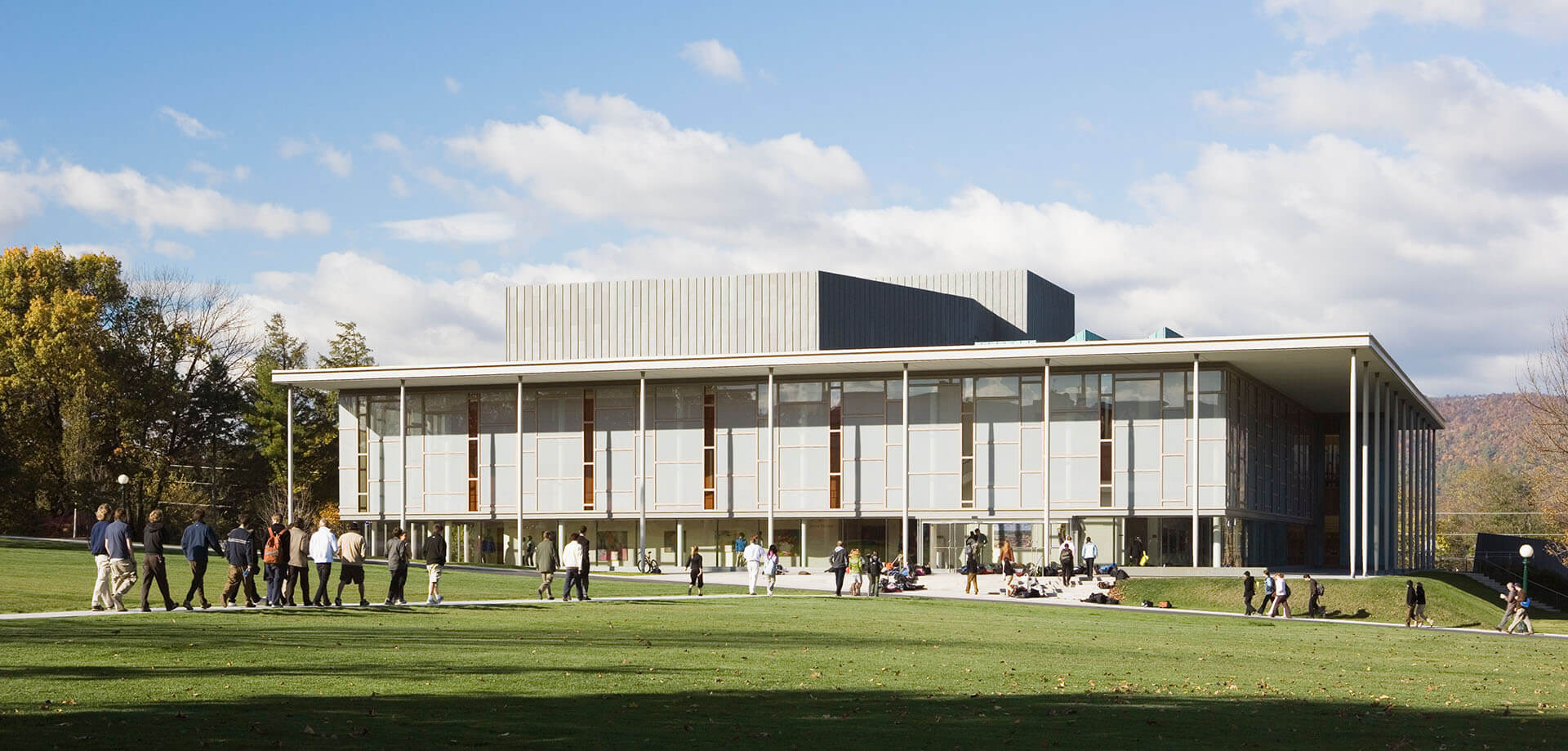
Selected Clients
Branksome Hall
Cathedral of St. John the Divine
Choate-Rosemary Hall School
Grace Church School
The Mercersburg Academy
Solomon Schechter Day School
The Westminster Schools
International Schools
Our facilities for international schools respond to the mission-driven priorities of these institutions. Buildings are shaped by international best practices and the needs of diverse school communities. Designs responds to global contexts, cultural concerns and architectural traditions while incorporating advanced opportunities for collaborative learning and flexible teaching modalities.
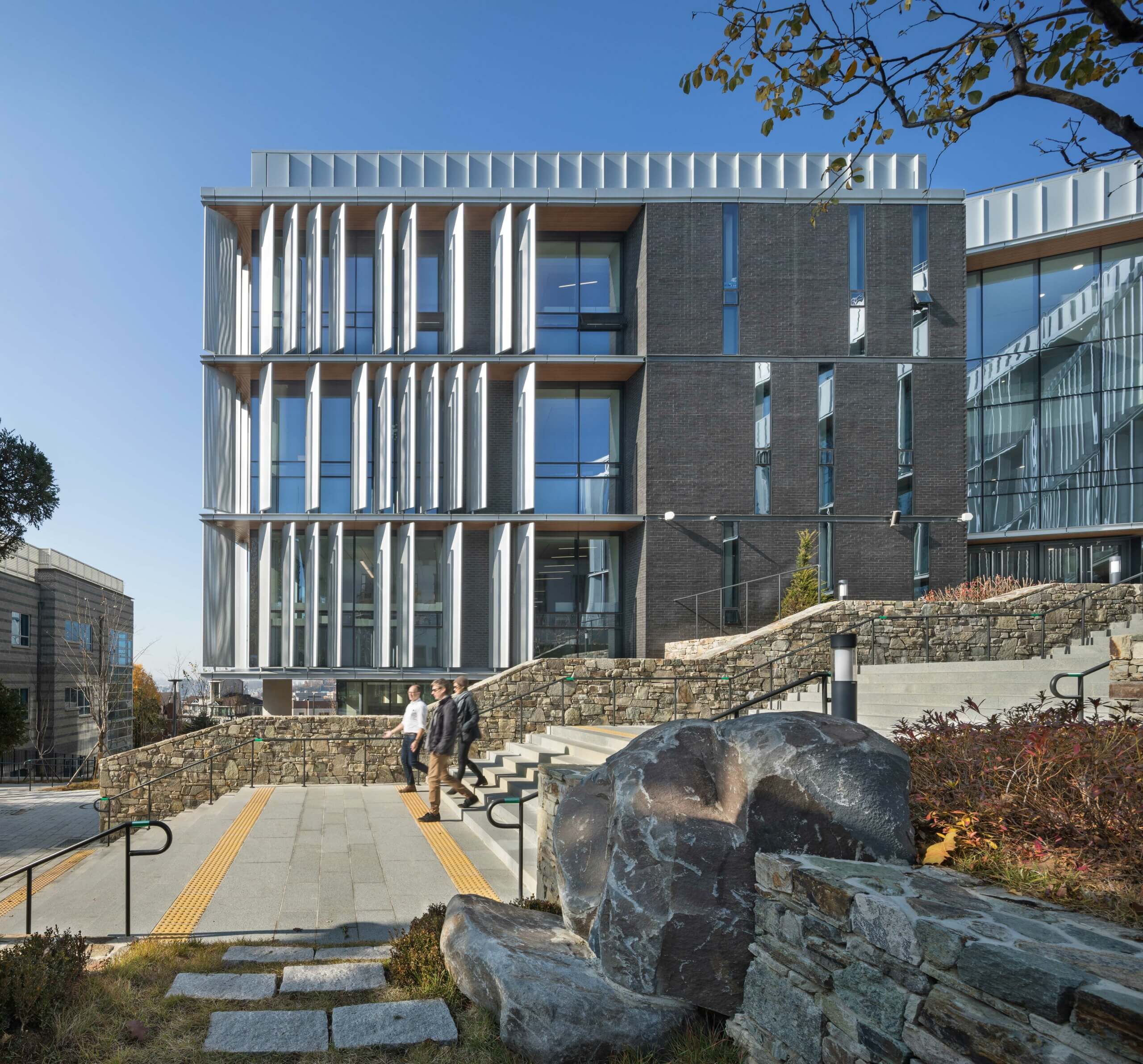
Selected Clients
American School in Japan
Branksome Hall
Concordia International School
Lycee Francais de New York
The Seoul Foreign School
Master Planning
Our master plans provide strategies for long-term growth that support educational goals while accounting for the rapid evolution of pedagogy and advancements in learning technology. Our range of strategic approaches – including analytics, physical planning and visualization – engage stakeholders and create flexible frameworks for growth.
Selected Clients
American School in Japan
The Cathedral School, Cathedral of St. John the Divine
Concordia International School
Oaks Christian School
Sidwell Friends School
Seoul Foreign School
The Westminster Schools
